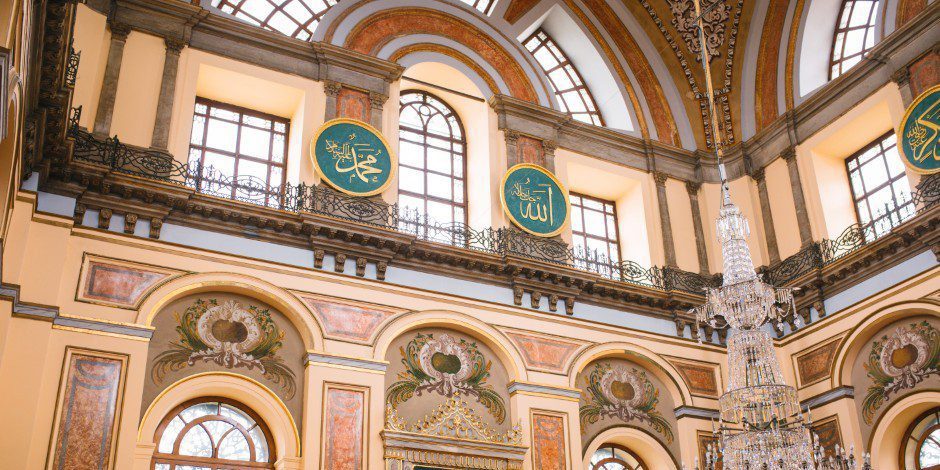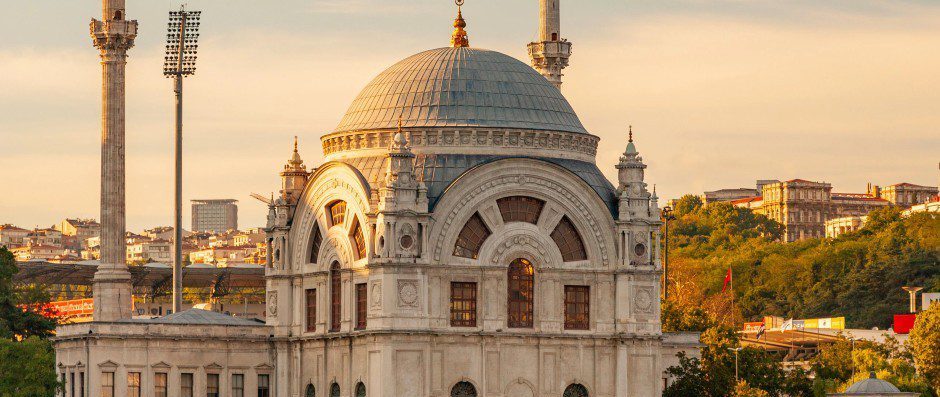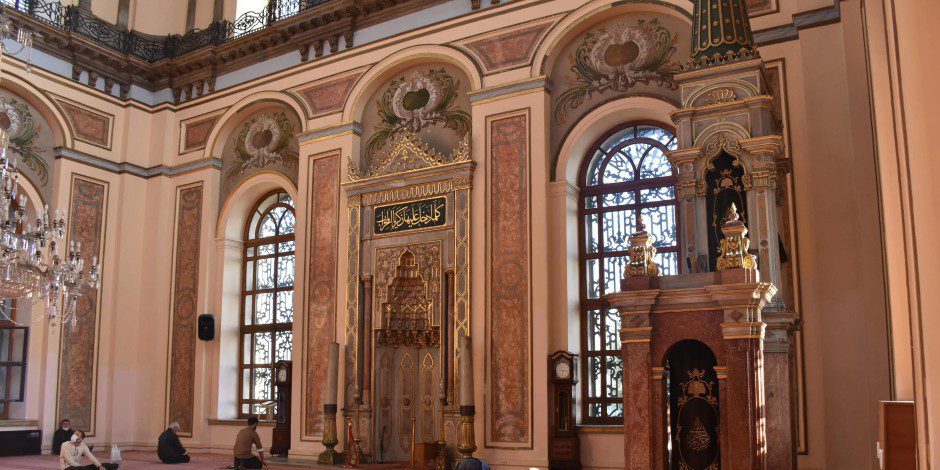Nestled beside the Dolmabahçe Palace in Istanbul, the Dolmabahçe Mosque stands as a striking testament to the grandeur and transformation of the Ottoman Empire during the 19th century. This mosque, although relatively small compared to other monumental mosques in Istanbul, offers a fascinating blend of architectural traditions, combining Ottoman style with European influences. Its beauty and historical significance make it a must-visit for anyone looking to explore Istanbul’s rich cultural and architectural heritage.

Historical Context and Construction
The Dolmabahçe Mosque was constructed between 1853 and 1855, during the reign of Sultan Abdulmecid I, who sought to modernize the Ottoman Empire and integrate more European-style aesthetics into the empire’s buildings. The mosque was commissioned as part of the larger Dolmabahçe Palace complex, which was being developed as a new administrative and royal center for the empire. Located near the Bosphorus, this area was transformed from a simple harbor into a lavish complex that would eventually become the primary residence of the Ottoman sultans.
The architect behind the mosque’s design was James William Smith, a British architect who had previously worked on various projects in the Ottoman Empire. Smith was known for his ability to blend traditional Ottoman architectural elements with contemporary European styles, and the Dolmabahçe Mosque is a remarkable example of this fusion.

Architectural Design and Features
The Dolmabahçe Mosque exemplifies a distinct Ottoman Baroque style, marking a significant departure from the classical Ottoman mosque architecture that dominated earlier periods. The building’s design features a harmonious blend of Baroque, Rococo, and traditional Ottoman styles, offering a unique visual experience.
- Exterior Design: The mosque’s façade is characterized by a central large dome, supported by a series of arches. The dome is flanked by two elegant, slender minarets, which are often highlighted as a defining feature of Ottoman mosques. The exterior features a subtle blend of marble and stone, complemented by ornamental elements that draw inspiration from both European and Ottoman traditions.
- Interior Decoration: Inside, the mosque is nothing short of opulent. The prayer hall is spacious and well-lit, thanks to large windows adorned with stained glass that allow natural light to filter through. The mihrab (prayer niche) is intricately decorated with marble, while the mimbar (pulpit) is finely crafted from wood, featuring delicate carvings. Gold leaf accents, ornate chandeliers, and luxurious textiles adorn the space, giving the interior an almost royal feel. These lavish touches reflect the extravagant tastes of Sultan Abdulmecid I and the court’s desire for grandeur.
- Influence of European Styles: One of the mosque’s most notable features is its European influence, evident in the Baroque detailing on both the exterior and interior. Unlike the more austere designs of earlier Ottoman mosques, the Dolmabahçe Mosque’s decorations show an inclination towards the lavish Rococo and Baroque styles that were popular in Europe at the time. The use of gold leaf and intricate stucco work in the interior design was highly fashionable during the period.
Cultural and Religious Significance
While the Dolmabahçe Mosque was constructed primarily to serve the needs of the royal family and their court, it also serves as a significant religious site for the local population. Like many mosques in Istanbul, it remains a place of worship for Muslims and is open to the public. Visitors are welcome to enter and admire the mosque’s beauty, provided they adhere to the customary dress code and prayer times.
The mosque’s proximity to the Dolmabahçe Palace, now a museum, offers visitors the opportunity to explore the blend of royal and religious life in the Ottoman Empire. The mosque’s design reflects the sultans’ efforts to incorporate European influences into their daily lives while upholding traditional Islamic architectural principles.

The Role of the Dolmabahçe Mosque in Ottoman Modernization
The Dolmabahçe Mosque holds a special place in the narrative of Ottoman modernization. During the 19th century, under Sultan Abdulmecid I, the Ottoman Empire saw significant reforms aimed at modernizing both its political and cultural landscape. The construction of buildings like the Dolmabahçe Palace and the mosque represents the sultan’s effort to bring the empire in line with the emerging European style, creating an opulent, westernized aesthetic that reflected the global aspirations of the Ottoman rulers.
This mosque exemplifies the empire’s transition from the classical Ottoman architectural style, which was heavily influenced by the Islamic Golden Age, to a more eclectic and international style that sought to blend East and West. The Dolmabahçe Mosque, alongside the palace, symbolizes this era of change and adaptation.
Visiting the Dolmabahçe Mosque Today
Today, the Dolmabahçe Mosque remains a serene and beautiful place of worship amidst the bustling streets of Istanbul. Visitors can admire its architectural details and experience a glimpse of the opulence that once surrounded the Ottoman sultans. It is open to tourists outside of prayer times, offering an opportunity to explore one of the most beautiful mosques in Istanbul, where European design influences blend with Islamic architecture.
In conclusion, the Dolmabahçe Mosque is more than just a religious site—it’s a monument to the complex and rich history of the Ottoman Empire, where East meets West in architectural grandeur. Whether you are an architecture enthusiast, a history buff, or simply someone looking to explore Istanbul’s cultural richness, the Dolmabahçe Mosque is a fascinating destination that captures the essence of 19th-century Ottoman modernization.



0 Comment